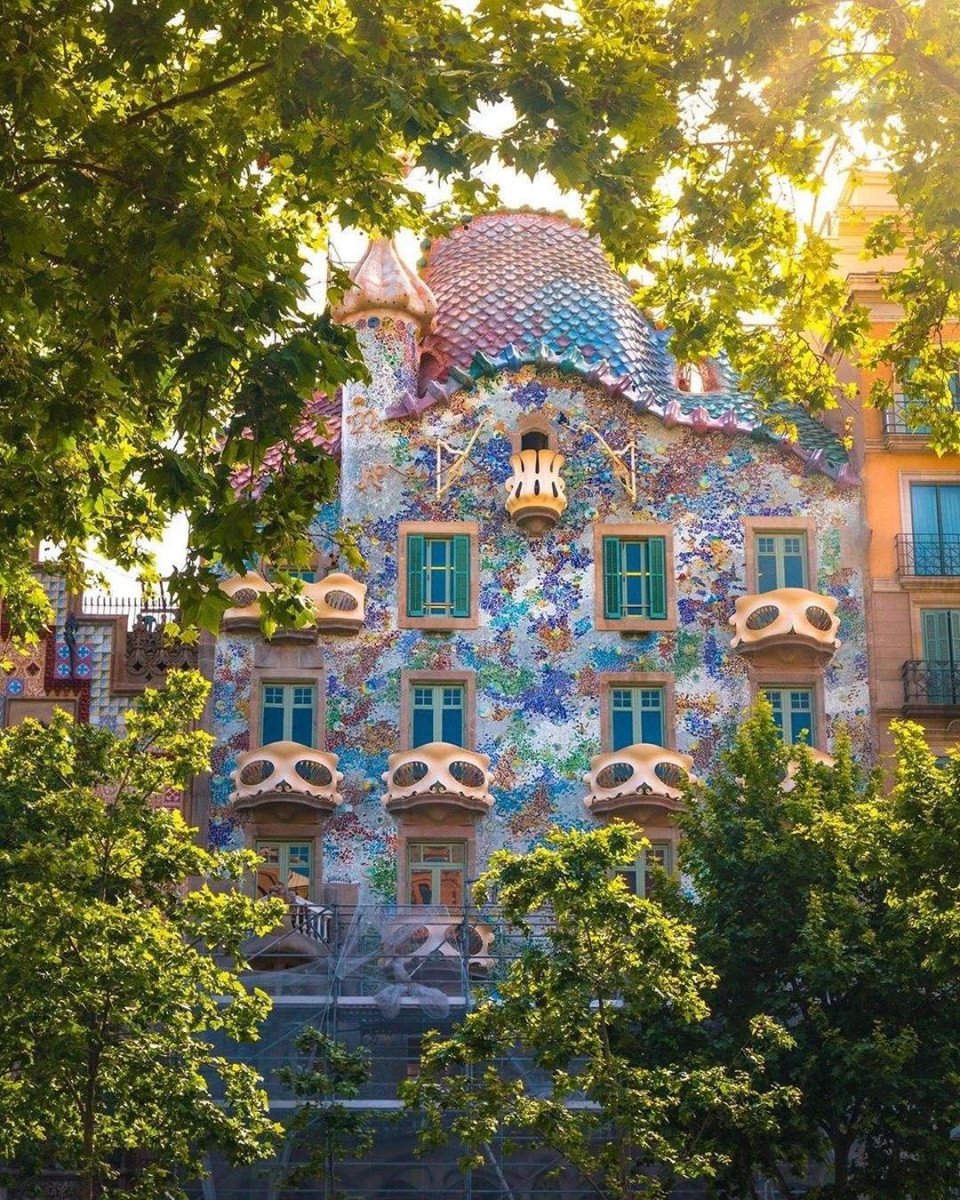One of the most appealing things about Barcelona is the diversity you can find in the city. Each _barrio_ (neighbourhood) has its own energy, characteristics and charm. Read about the more well-known (and our favourite) neighbourhoods.

Ciutat Vella
Meaning “Old City” in English, this is the oldest district in Barcelona and is considered the centre of the city. This district is comprised of 4 neighbourhoods: El Gòtic, El Raval, La Barceloneta, and Sant Pere, Santa Caterina and La Ribera. The last three are usually grouped together and the famous El Born neighbourhood is the part of La Ribera which is below Career Princesa and leads towards Barceloneta. These parts of the city were once surrounded by old Medieval walls.
El Gòtic
El Barrio Gótico, or the Gothic Quarter in English is one of the most-visited neighbourhoods in Barcelona. It stretches between the Rambla and Via Leitana to Plaça Catalunya down to the seafront. Within the neighbourhood, you’ll find Barcelona’s famous cathedral, the seat of the Catalan government as well as the town hall.
Although most of the architecture that remains is no longer from the Middle Ages, the neighbourhood still contains labyrinthine streets and small squares and is mostly closed off to regular traffic. You will be able to find some things even older than the Middle Ages – the Roman and Medieval walls as well as the remains of the Roman temple (Temple d’August). As you can see, there is a lot of history within these tiny streets.
The Plaça Reial, a Spanish-style plaza with palm trees and beautiful archways is a popular place to have a coffee or some tapas. You’ll also find many boutiques and small restaurants and cafés hidden in plain sight.
El Raval
You’ll find Raval on the other side of La Rambla, opposite the Gothic Quarter. It has a diverse immigrant community making it a colourful and exciting neighbourhood. It is home to the CCCB (Centre of Contemporary Culture of Barcelona) and MACBA (Contemporary Art Museum of Barcelona), where you’ll find many skateboarders and young people gathering outside. You can also visit La Boquería, Barcelona’s most famous market.
El Born
Another neighbourhood that was within the original walled city of Barcelona, Born is considered to be one of the hippest neighbourhoods. With similar maze-like streets to the Gothic Quarter, you’ll find boutiques from some local designers, trendy restaurants and bars, the old Mercat del Born (which now houses a cultural centre where you can see the ruins of parts of the Medieval city) and the Santa Caterina Market.

Barceloneta
Barceloneta is Barcelona’s beach neighbourhood. Practically uninhabited until the 18th century, the neighbourhood we know today is very different. You’ll sense a faint whiff of salt and during the day, you’ll find many people enjoying the sun, sea and sand. Restaurants here serve fresh seafood and the typical tapa to this neighbourhood – the bomba, a fried meat-filled potato ball served with aioli.

L’Eixample
L’Eixample (the Catalan word for “expansion”) is characterized by its famous grid pattern, long straight streets and avenues and octagonal blocks. It’s a larger district that houses smaller neighbourhoods including Fort Pienc, Sagrada Familia, Sant Antoni, and Dreta & Esquerra de l’Example.
Passeig de Gràcia is one of the main avenues that connects Plaça Catalunya to Gràcia. This beautiful tree-lined street is filled with grand Art Nouveau buildings, shops and restaurants. It’s on this boulevard that you’ll find Antoni Gaudí’s Casa Batlló and Casa Milà. Of course, if you continue walking along Carrer Mallorca, you’ll find yourself face to face with the glorious Sagrada Familia. Avenida Diagonal is the main street of l’Eixample (and most likely the most important of Barcelona) and spans from the sea and up as far as the Les Corts neighbourhood.

Gràcia
Gràcia, like many other neighbourhoods in Barcelona, was not always part of the city. For this reason, when you walk up to this barrio, it feels like you’re in a little village. With the many shops, supermarkets, restaurants and cafés there really is no reason to leave this cute and relatively quiet neighbourhood.
Gràcia really comes alive during its Festa Major, when residents come together to decorate their streets according to different themes. These colourful displays and live music acts draw people from all corners of the city.
Poblenou
Once an industrial neighbourhood, the “up and coming” barrio of Poblenou (Pueblo Nuevo in Spanish and “new village” in English) has a little bit of everything. The Rambla de Poblenou, lined with trees, shops and cafés, leads down toward the beach. The Olympic Games in 1992 is what really began its transformation. This laid-back neighbourhood (thanks to its beach vibes) has a little bit of everything. Among the quieter neighbourhoods, bars, restaurants and shopping centres are close at hand.
Barcelona has many more neighbourhoods than this, but it’s hard to discuss all of them. Which one is your favourite? Which barrios have you lived in?
Posted in Culture, Moving to Barcelona
Learn and improve your Spanish in Barcelona, one of the world's most vibrant and exciting cities.
Here at Speakeasy you'll find courses for all abilities and timetables, an incredible team of talented and motivated teachers and classmates to share your interests and passions. And if you need a visa for your stay, then of course we're able to help and advise.

Start your learning Spanish in Barcelona adventure
Let us know if you have any questions about our courses, our school and life at Speakeasy.